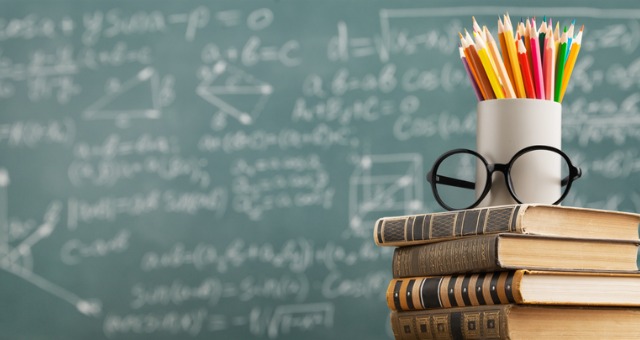Get Top Results with Primary Science Tuition Singapore from Experienced Tutors
Get Top Results with Primary Science Tuition Singapore from Experienced Tutors
Blog Article
A Comprehensive Overview to the Various Knowing Techniques in Key Scientific Research Instruction
The exploration of diverse understanding approaches in main scientific research instruction provides a possibility for teachers to boost trainee interaction and understanding substantially. By analyzing hands-on understanding techniques, inquiry-based methods, and joint methods, we can identify efficient practices that provide to different discovering designs.

Hands-On Understanding Methods
Hands-on learning strategies play a pivotal role in primary science guideline, engaging pupils in energetic exploration and testing. These methods enable students to communicate directly with products and phenomena, fostering a deeper understanding of scientific ideas. By using manipulatives, models, and real-life experiments, educators create a setting where pupils can observe, assume, and check their ideas.
Such methods not just improve understanding but additionally cultivate crucial reasoning and analytic skills. When students join tasks like building basic devices, growing seeds, or performing chain reactions, they are motivated to ask inquiries and seek responses with their own observations. This experiential approach assists to debunk intricate scientific principles, making them more relatable and accessible.
Additionally, hands-on understanding advertises collaboration among peers, as trainees typically work in teams to conduct experiments or share findings. This team effort not just improves their learning experience yet likewise develops vital social abilities. Eventually, integrating hands-on methods in key scientific research guideline fosters a long-lasting love of learning and interest regarding the all-natural globe, laying a solid structure for future academic quests in scientific research and past.
Inquiry-Based Learning
Inquiry-based understanding is a training strategy that encourages trainees to ask inquiries, explore phenomena, and construct their own understanding of scientific principles. This technique moves the emphasis from standard teacher-led guideline to a much more student-centered experience, where students take the campaign in their educational journey. By fostering curiosity, inquiry-based understanding advertises deeper interaction with the product, allowing trainees to check out subjects in a meaningful context.
In technique, this strategy usually includes hands-on experiments, monitorings, and essential thinking tasks that straighten closely with the scientific approach. Students are motivated to formulate theories, design examinations, and examine data, which cultivates crucial skills such as analytical and analytical reasoning. The duty of the teacher in this framework is to help with exploration, assisting trainees with the inquiry process while urging independent thought and cooperation.
Furthermore, inquiry-based learning supports a feeling of ownership over the understanding process, inspiring students to pursue understanding proactively. This approach not only improves understanding of clinical concepts but additionally promotes a long-lasting love for knowing, gearing up students with the abilities essential to browse a progressively complicated globe.
Collaborative Knowing Approaches
Joint knowing approaches empower students to involve in significant interactions with peers, cultivating a common obligation for their educational end results. In primary scientific research instruction, these methods encourage learners to collaborate to explore clinical ideas, address troubles, and perform experiments (primary science tuition Singapore). By taking part in team activities, trainees can utilize diverse perspectives, enabling richer understanding and retention of clinical expertise
One key element of collective understanding is the emphasis on interaction skills. Students should verbalize their thoughts, pay attention proactively to others, and bargain concepts, all of which are crucial proficiencies in both academic and real-world contexts. This social interaction not just enhances their understanding of scientific principles yet likewise advertises team effort and dispute resolution abilities.
When students see the worth of their payments within a click to read more group, they are a lot more likely to take possession of their discovering journey. On the whole, integrating collaborative discovering strategies in main science instruction grows a dynamic discovering setting that prepares trainees for future scholastic and social obstacles.
Modern Technology Integration in Scientific Research
The integration of modern technology in primary science instruction improves learning experiences by giving innovative devices and resources that support different teaching methods, including collaborative learning - primary science tuition Singapore. The use of digital systems, simulations, and interactive applications permits trainees to engage deeply with scientific concepts, assisting in a more hands-on strategy to discovering
Digital labs, for example, allow learners to additional info perform experiments safely and efficiently, promoting inquiry-based learning. These tools can replicate real-world scientific situations, allowing pupils to imagine intricate processes that would be tough to replicate in a conventional classroom setup. In addition, modern technology fosters interaction and partnership amongst pupils, as they can share searchings for and collaborate on tasks with on-line systems.
Furthermore, multimedia presentations and educational videos can improve lessons by accommodating diverse discovering styles, making abstract principles much more accessible. Data analysis tools additionally equip pupils to accumulate and analyze scientific data, reinforcing essential believing abilities. Generally, the calculated unification of innovation in primary science instruction not only boosts engagement but additionally prepares students for a technically sophisticated culture, equipping them with important skills for future clinical endeavors.
Distinguished Instruction Techniques
Separated instruction approaches are crucial for resolving the varied demands of learners in main scientific research education and learning. These methods make it possible for instructors to customize their teaching methods to accommodate differing capabilities, passions, and discovering styles within the classroom. By employing differentiated direction, educators can develop an inclusive environment that fosters engagement and boosts understanding of clinical principles.
One reliable technique is to utilize flexible organizing, which permits students to collaborate with peers at comparable ability levels or with varying point of views. This approach urges peer discovering and promotes vital reasoning. Furthermore, offering selections in projects can equip trainees, permitting them to choose jobs that resonate with their interests while still satisfying curricular purposes.
Moreover, integrating tiered jobs is one more important technique. By creating tasks with differing degrees of intricacy, instructors can ensure that all students are appropriately tested, no matter their effectiveness. Utilizing developmental assessments to evaluate recognizing additional enables instructors to adjust check my site their training techniques dynamically, making sure that each learner gets the assistance they require.
Eventually, executing differentiated instruction strategies in key science education not just boosts trainee knowing results yet additionally grows an enthusiasm for scientific research, preparing students for future scholastic quests.

Conclusion
In summary, efficient key science guideline necessitates a diverse approach that includes hands-on learning, inquiry-based techniques, and joint techniques. The combination of innovation and differentiated direction better deals with diverse understanding styles, fostering an atmosphere for exploration and vital reasoning. By implementing these strategies, teachers can improve trainee involvement and understanding, ultimately nurturing a lifelong enthusiasm for scientific research and questions. Such thorough methodologies are vital for establishing informed and curious future researchers.
The exploration of diverse understanding methods in main science instruction offers a possibility for instructors to enhance trainee interaction and comprehension significantly.Hands-on understanding strategies play a pivotal function in key science guideline, engaging trainees in active exploration and experimentation.Inquiry-based learning is an educational technique that motivates trainees to ask concerns, examine phenomena, and create their own understanding of clinical concepts.Joint knowing strategies encourage students to involve in meaningful communications with peers, promoting a common responsibility for their instructional outcomes. On the whole, integrating collective understanding strategies in main science direction cultivates a dynamic knowing atmosphere that prepares pupils for future academic and social obstacles.
Report this page